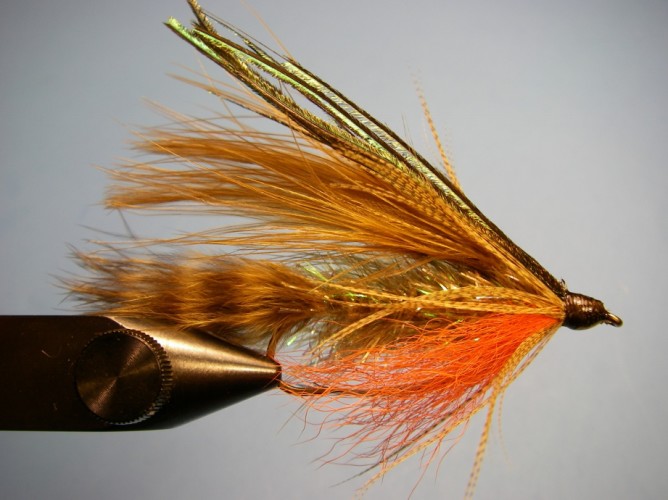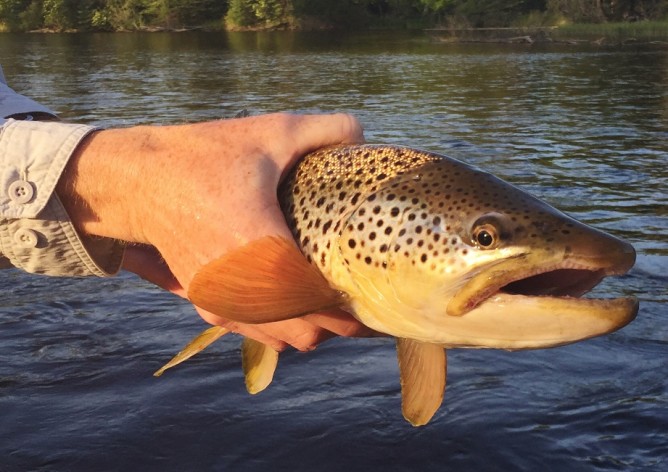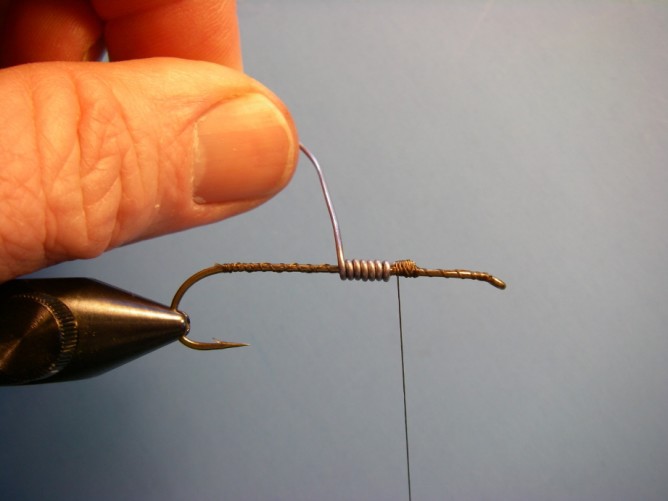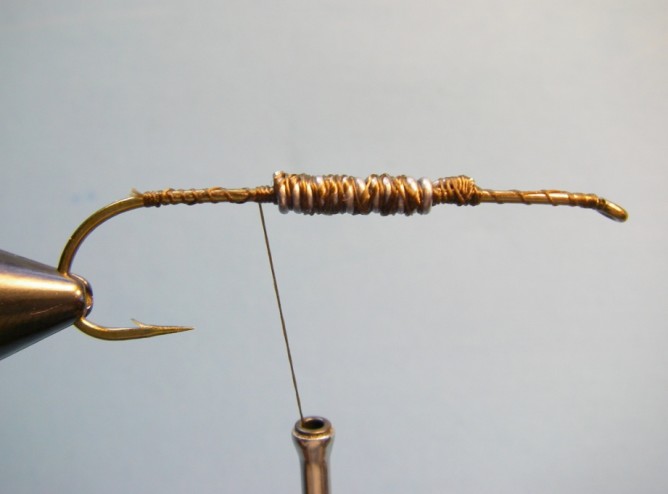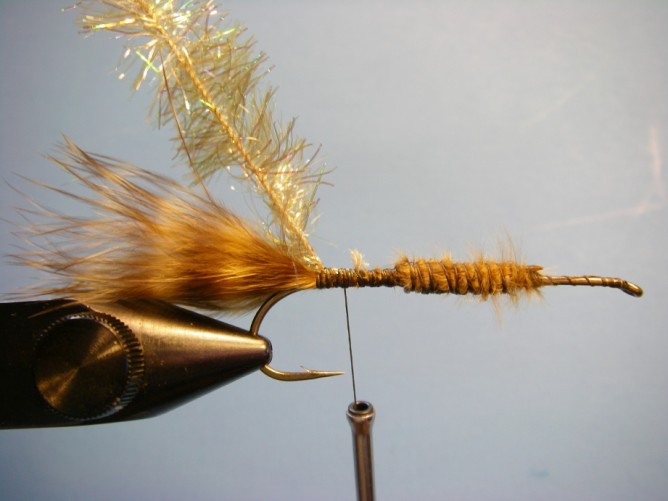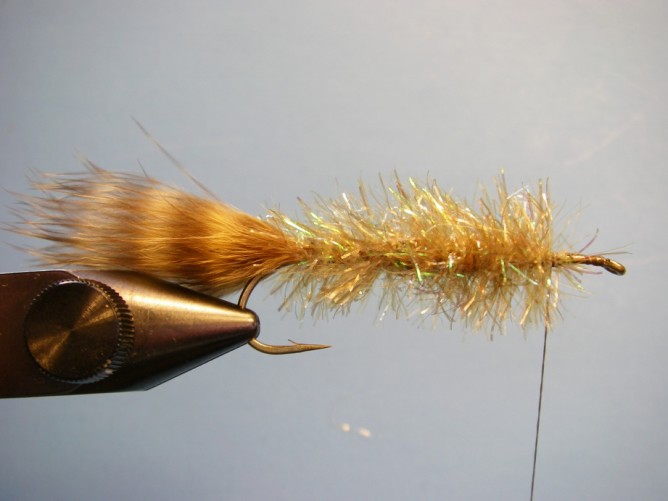Big fish eat small fish. And, this classic-styled streamer pattern does a good job of imitating our native brook trout which are vulnerable to the larger brown trout that often share the same water.
While not large by today’s mega-articulated-tandem and otherwise over-accessorized streamer patterns, this kinder, gentler, natural profiled streamer allows you to sneak it into the territorial trout’s domain before it gets pounced on.
You can fish this brook trout with a shorter sink-tip (10-12′) or even a floating line. If using the latter, proper mending in the retrieve will allow you to dance and suspend the fly in likely fish-holding water and above structure.
Brookies seem more prolific in the smaller rivers of Michigan where it is easier to pin-point the likely fish holding/sheltering lies vs. casting big, searching and covering water. When fish aren’t on the feed, this streamer approach sometimes is the difference between success and saying, “They just weren’t on a streamer bite today.”
Not a fly tier? Ted’s Brook Trout is available from Rainy’s Flies and can be bought in stocking fly shops. Below are tying instructions for you fly tiers.
Recipe
Hook: TMC 300 #2-6
Thread: Fly Master + or Uni 6/0 Olive Dun
Tail: Grizzly Marabou – Golden Brown
Body: Golden Olive Tri-lobal or Estaz
Wing: Marabou – Golden Brown
Throat: Calf/Kip Tail – Orange
Collar: Mallard Flank Dyed Wood Duck
Topping: Peacock Herl
Lead: .035” lead wire
Tying Instructions:
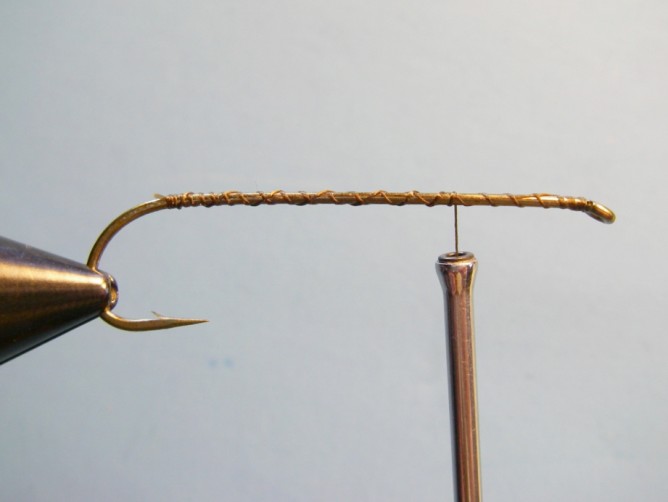 Step 1. Start a thread base behind hook eye and take back to above barb.
Step 1. Start a thread base behind hook eye and take back to above barb.
Step 2. Cut 3″ of lead wire and tie in a hook gape’s distance behind the eye and wrap backwards – cover somewhat with thread wraps.
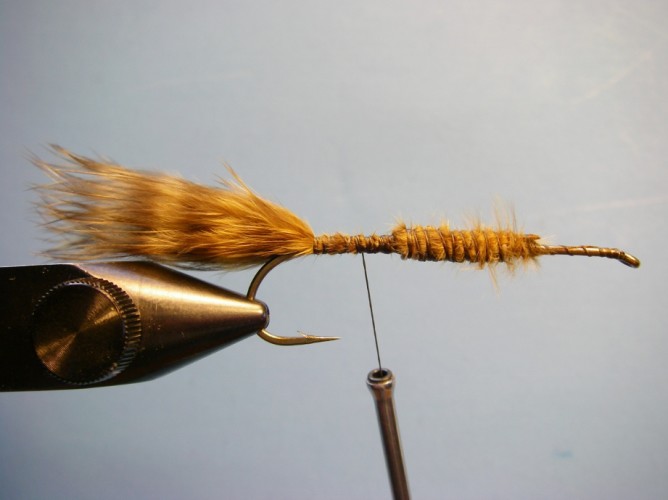 Step 3. Tie in Tail so it extends ½ of a hook shank’s length.
Step 3. Tie in Tail so it extends ½ of a hook shank’s length.
Wrap base of feather over lead to help build up underbody.
Step 4. Tie in Estaz and wind forward stopping just ahead of the lead wire.
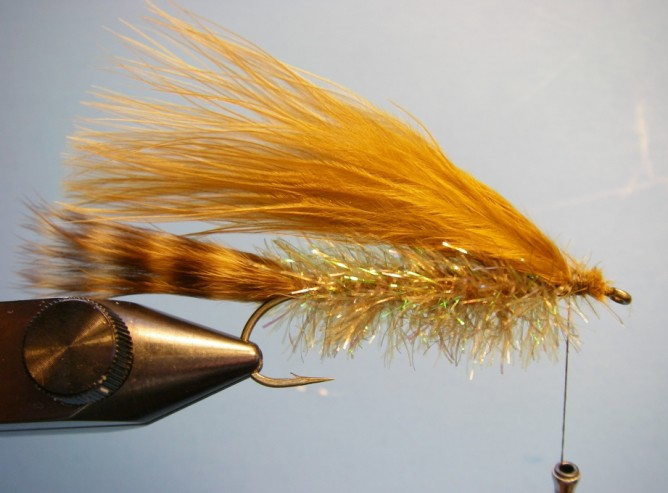 Step 5. Tie in a full marabou feather on the top of the hook with the tips extending to the tail.
Step 5. Tie in a full marabou feather on the top of the hook with the tips extending to the tail.
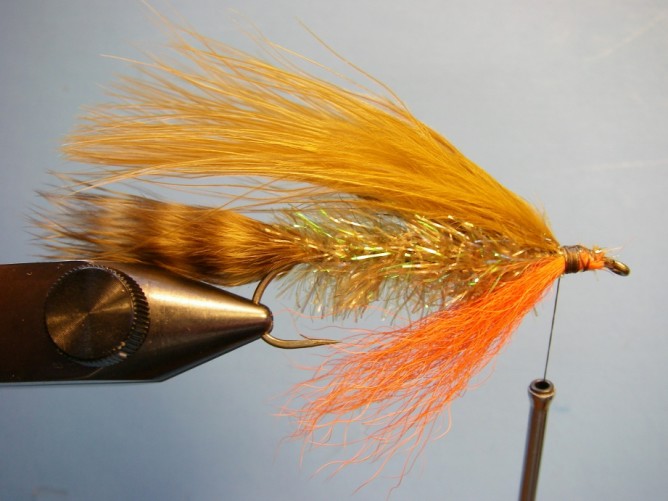 Step 6. Tie in a clump of Kip/Calf Tail on the underside so the tips extend to approximately the hook barb.
Step 6. Tie in a clump of Kip/Calf Tail on the underside so the tips extend to approximately the hook barb.
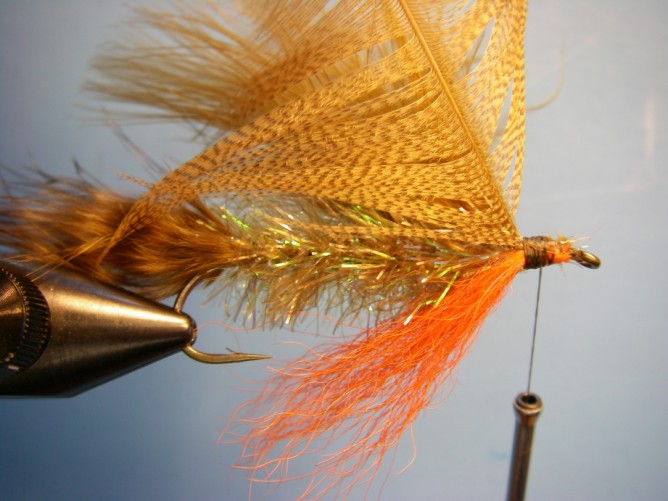 Step 7. Tie a mallard dyed wood duck feather by the tips. “Break” the back fibers on the
Step 7. Tie a mallard dyed wood duck feather by the tips. “Break” the back fibers on the
side of the stem away from you by running the back edge of your scissor edge along the stem.
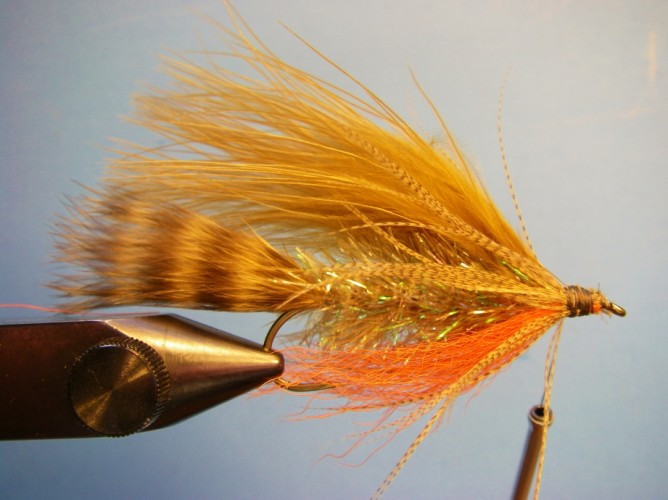 Step 8. Wrap a collar of the mallard flank feather.
Step 8. Wrap a collar of the mallard flank feather.
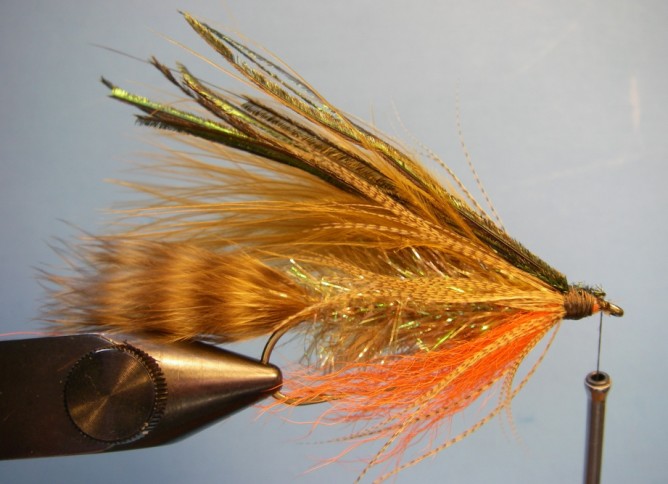 Step 9. Tie in 6 to 8 strands of peacock herl on top of the fly.
Step 9. Tie in 6 to 8 strands of peacock herl on top of the fly.
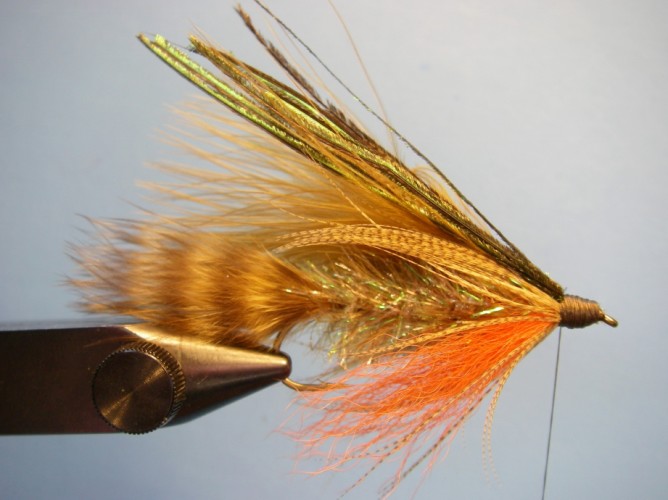 Step 10. Build a large, smooth thread head and whip finish. On flies like this, I like to apply two
Step 10. Build a large, smooth thread head and whip finish. On flies like this, I like to apply two
thin coats of Sally Hansen’s clear nail polish to both protect the threads and put a nice finish on the fly.

